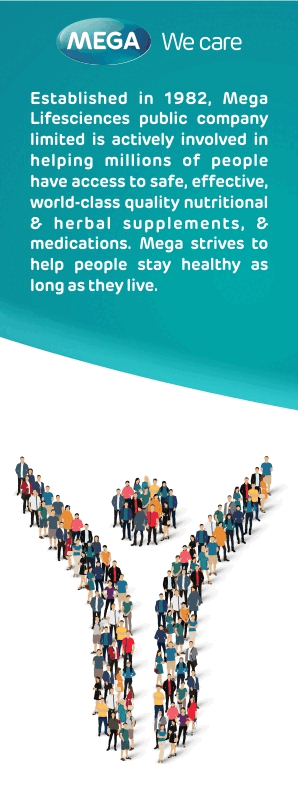RISKY SEXUAL BEHAVIOR AND ASSOCIATED FACTORS AMONG STUDENTS OF HAWASSA UNIVERSITY COLLEGE OF MEDICINE AND HEALTH SCIENCE, ETHIOPIA 2022
DOI:
https://doi.org/10.69614/ejrh.v15i3.669Keywords:
Risky sexual behavior, Hawassa University, EthiopiaAbstract
BACKGROUND: Any sexual activity that increases the risk of sexually transmitted infections (STI) and unwanted pregnancies is considered risky sexual behavior (RSB). Although it is assumed that university students are fully aware of HIV risks and preventive measures, evidence suggests that they are more likely to engage in RSB.
OBJECTIVE: To assess the prevalence of risky sexual behavior and associated factors among students of Hawassa University, college of medicine and health science, Ethiopia
METHOD: An institutional-based cross-sectional study was conducted from July 18 to August 30, 2022. A total of 334 students were selected first by stratified based on their academic year and then selected using a simple random sampling method. A structured self-administered questionnaire was used to collect the data. Epi-Data version 3.1 was used for data entry and the Statistical Package for the Social Sciences (SPSS) version 20 was used for data analysis. Bivariate and multivariate logistic regression analyses were used to identify factors associated with RSB.
RESULT: The prevalence of RSB among students at Hawassa University College of medicine and health science was 109(34.4%). Drinking alcohol [AOR: 8.15; 95% CI (2.68, 11.61)], watching pornography videos [AOR: 3.32; 95% CI (1.53, 6.96)], history of childhood sexual abuse [AOR: 2.34; 95% CI (1.78, 6.37)] were found to be the independent predictors of RSB. While religious engagement [AOR: 0.62; 95% CI (0.29, 0.83)] was a protective factor for RSB.
CONCLUSION AND RECOMMENDATIONS: More than one-third of students were engaged in RSB. Alcohol consumption, watching pornography videos, history of childhood sexual abuse, and religious engagement were predicting factors for RSB. Comprehensive behavioral intervention programs are needed on the identified factors; to reduce alcohol consumption, and to improve the habit of media consumption among university students. In addition, sex education programs should rethink their approach to preventing RSB, because so far the pornography influence is rarely considered.
References
2. UNAIDS. Epidemiological estimates, 2020 [cited 2022 June 20]. Available from: https://www.unaids.org/sites/default/files/media_asset/2020_aids-data-book_en.pdf.
3. FDRE. National Adolescent and Youth Health Strategy (2016-2020). Addis Ababa, Ethiopia: MOH; 2016.
4. Central Statistical Agency - CSA/Ethiopia, ICF. Ethiopia Demographic and Health Survey 2016. Addis Ababa, Ethiopia: CSA and ICF, 2017.
5. WHO. Adolescent and young adult: health risks and solutions 2022 [cited 2022 December 10]. Available from: https://www.who.int/news-room/fact-sheets/detail/adolescents-health-risks-and-solutions.
6. Tura G, Alemseged F, Dejene S. Risky Sexual Behavior and Predisposing Factors among Students of Jimma University, Ethiopia. Ethiopian journal of health sciences. 2012;22(3):170-80.
7. Mengistu TS, Melku AT, Bedada ND, Eticha BT. Risks for STIs/HIV infection among Madawalabu university students, Southeast Ethiopia: a cross sectional study. Reproductive health. 2013;10:38.
8. Tekletsadik EA, Ayisa AA, Mekonen EG. Determinants of risky sexual behaviour among undergraduate students at the University of Gondar, Northwest Ethiopia. 2021;150:e2.
9. Dingeta T, Oljira L, Assefa N. Patterns of sexual risk behavior among undergraduate university students in Ethiopia: a cross-sectional study. The Pan African medical journal. 2012;12:33.
10. Soboka B, Kejela G. Assessment of risky sexual behaviors among arba minch university students, arba minch town, snnpr, Ethiopia. Journal of Child and Adolescent Behavior. 2015;3(2):2-7.
11. The National Child Traumatic Stress Network. Sexual Abuse; 2022. Available at: https://www.nctsn.org/what-is-child-trauma/trauma-types/sexual-abuse. Accessed January 10, 2023.
12. Fetene N, Mekonnen W. The prevalence of risky sexual behaviors among youth center reproductive health clinics users and non-users in Addis Ababa, Ethiopia: A comparative cross-sectional study. PloS one. 2018;13(6):e0198657.
13. Fentahun N, Mamo A. Risky sexual behaviors and associated factors among male and female students in Jimma Zone preparatory schools, South West Ethiopia: comparative study. Ethiopian journal of health sciences. 2014;24(1):59-68.
14. Mersha A, Teji K, Darghawth R, Gebretsadik W, Shibiru S, Bante A, et al. Risky sexual behaviors and associated factors among preparatory school students in Arba Minch town, Southern Ethiopia. Journal of Public Health and Epidemiology. 2018;10(12):429-42.
15. Jahanfar S, Pashaei Z. Sexual attitudes and associated factors of risky sexual behaviors among university students. 2022;12(8):e2698.
16. Perera UAP, Abeysena C. Prevalence and associated factors of risky sexual behaviors among undergraduate students in state universities of Western Province in Sri Lanka: a descriptive cross sectional study. Reproductive health. 2018;15(1):105.
17. Asekun-Olarinmoye OS, Asekun-Olarinmoye EO, Adebimpe WO, Omisore AG. Effect of mass media and Internet on sexual behavior of undergraduates in Osogbo metropolis, Southwestern Nigeria. Adolescent health, medicine and therapeutics. 2014;5:15-23.
18. Girmay A, Mariye T. Risky sexual behavior practice and associated factors among secondary and preparatory school students of Aksum town, northern Ethiopia, 2018. BMC research notes. 2019;12(1):698.
19. Mulu W, Yimer M, Abera B. Sexual behaviours and associated factors among students at Bahir Dar University: a cross sectional study. Reproductive health. 2014;11:84.
20. Tadesse G, Yakob B. Risky sexual behaviors among female youth in Tiss Abay, a semi-urban area of the Amhara Region, Ethiopia. PloS one. 2015;10(3):e0119050.
21. Castro Á, Ibáñez J, Maté B, Esteban J, Barrada JR. Childhood Sexual Abuse, Sexual Behavior, and Revictimization in Adolescence and Youth: A Mini Review. Frontiers in psychology. 2019;10:2018.
22. Thibodeau ME, Lavoie F, Hébert M, Blais M. Pathways Linking Childhood Maltreatment and Adolescent Sexual Risk Behaviors: The Role of Attachment Security. 2017;54(8):994-1005.
23. Mamo K, Admasu E and Berta MM. Prevalence and associated factors of risky sexual behavior among Debremarkos University regular undergraduate students, Debremarkos Town North West Ethiopia, 2016. Journal of Health, Medicine and Nursing 33, 40–50.



